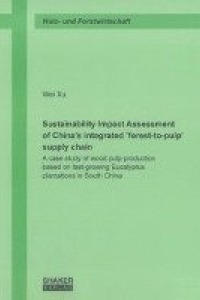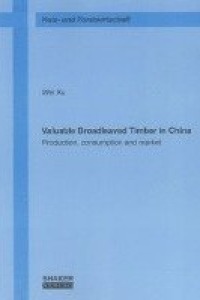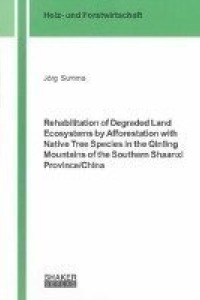
Liknande böcker
Sustainability Impact Assessment of China's Integrated 'forest-to-pulp' Supply Chain : A Case Study of Wood Pulp Production Based on Fast-growing Eucalyptus Plantations in South China
Bok av Wei Xu
In recent years, the development of China's wood pulp industry over the past two decades has been remarkable in order to meet increasing demand for wood pulp in domestic market. With the aim to ensuring adequate pulpwood supply for the expanding industry, a total area of 1.5 million hectares of fast-growing eucalyptus plantations has been planned, particularly in southern China, integrating with the establishment of large-scale wood pulp mills. Integration of wood pulp mills with fast-growing plantation establishment has become an important development pattern for the Chinese pulp industry, which leads to the formation of the "forest-to-pulp" supply chain which is the focus of this study.Meanwhile, there are increasing concerns from different stakeholders, either concerning the potential impacts to the environmental by managing large-scale eucalyptus plantations, or focusing on the sustainable development of these newly-built pulp mill projects.This study aims to carry out an integrated sustainability evaluation for China's forest-to-pulp supply, encompassing environmental, social and economic perspectives. It aims to get a clear overview of the status quo of the forest-to-pulp supply chain in China, to evaluate the associated environmental impacts, social benefits and economic profitability associated with the examined system, and to set up a sustainability benchmark for the plantation operations and wood pulp industry in China.The research boundary has been defined by adopting a "cradle-to-gate" perspective, covering the life cycle phases of raw material extraction from fast-growing eucalyptus plantations, through well-organized logistics of transportation, to the final product of manufactured Bleached Eucalyptus Kraft Pulp (BEKP) ready at the mill gate. For better illustration, the examined supply chain was divided into two sub-systems for data collection, including forest sub-system and pulp mill sub-system.A context of case study concept was adopted for this research. A leading plantation operator with more than 40,000 hectares eucalyptus plantations in Guangxi was taken as case study for the forest sub-system. A representative BEKP pulp producer in Hunan province with an annual production capacity of 400,000 air-dried tons (ADT) of wood pulp was taken as case study for the pulp mill sub-system. Site- specific data was collected through company visits during 2009 to 2010, with regard to mass inputs and outputs from principal operations in practice. Data gaps were filled up by a variety of sources through literature review and from reliable database (i.e. Eco-invent).In order to get a clear overview of the status quo of China's forest-to-pulp supply chain, system modeling by simplification of essential components of the examined system was conducted by Umberto 5.5. The system modeling outcome with a well-established material flow networks was served as basis for the consequent environmental and social-economic analysis.The approach of Life Cycle Analysis (LCA) was applied to conduct the environmental impactassessment. Life Cycle Inventory (LCI) phase was conducted by compiling all the related inputs and outputs within the examined system by using Umberto 5.5. Eight impact categories that are relevant with the examined system were taken into account for the environmental impact assessment. The environmental impact assessment results were deeply analyzed by identifying the hot-spot sub-system and operations leading to higher environmental burdens. Based on these identified hot-spot operations, four optimization options were taken into consideration for scenario analysis.The approach of Cost Benefit Analysis (CBA) was applied for the social-economic analysis in this study. Life Cycle Costing (LCC) was applied to aggregate all the corresponding investment costs and operation costs for delivering pulpwood from managed plantations, and for manufacturing BEKP pulp under the current pattern in South China. Two
Visa pris inkl. frakt Inkl. frakt
Sustainability Impact Assessment of China's integrated 'forest-to-pulp' supply chain
358 kr
Finns i lager







